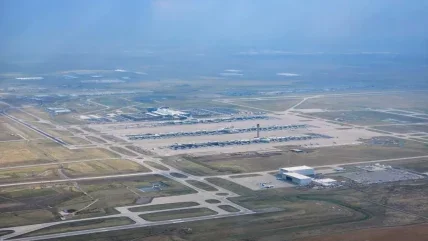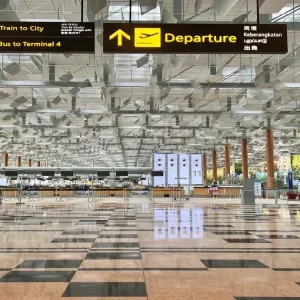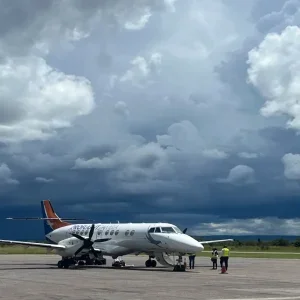
Biodiversity loss and ecosystem collapse are pressing global issues that have far-reaching consequences across various sectors, including the airport industry. As gateways to the world, airports occupy vast tracts of land and significantly impact the local environment. Understanding the interplay between airport operations and biodiversity is crucial for developing sustainable practices that minimise environmental harm while maintaining efficiency and safety.
The Intersection of Airports and Biodiversity
The Role of Airports in Biodiversity Loss
Airports, by their nature, require large areas of land, often resulting in the displacement of native species and destruction of habitats. The construction of runways, terminals, and associated infrastructure can lead to significant biodiversity loss. For example, clearing forests or draining wetlands to build airports destroys the habitats of numerous species, leading to a reduction in local biodiversity.
Ecosystem Services Affected by Airports
Ecosystems provide essential services such as air and water purification, climate regulation, and soil fertility. The disruption of these services due to airport activities can have cascading effects on local communities and wildlife. For instance, the alteration of water bodies can affect fish populations, while air pollution from aircraft emissions can impact plant health and reduce air quality.
Key Factors Contributing to Biodiversity Loss at Airports
Habitat Destruction and Fragmentation
One of the most significant contributors to biodiversity loss is habitat destruction and fragmentation. Airports often lead to the clearing of large areas of land, disrupting local ecosystems. Fragmentation creates isolated patches of habitats, making it difficult for species to move, find food, and reproduce, ultimately reducing genetic diversity.
Pollution
Airports are major sources of pollution, including noise, air, and water pollution. Noise pollution from aircraft can disturb wildlife, altering their natural behaviours and breeding patterns. Air pollution from jet engines releases pollutants such as nitrogen oxides and particulate matter, which can degrade air quality and harm both plant and animal life. Water pollution from runoff containing de-icing chemicals and fuel can contaminate nearby water bodies, affecting aquatic life.
Invasive Species
The global nature of air travel facilitates the spread of invasive species. Aircraft and cargo can inadvertently transport non-native species to new locations, where they can outcompete local flora and fauna, leading to a decline in native biodiversity. Invasive species often lack natural predators in their new environments, allowing them to proliferate unchecked.
Strategies for Mitigating the Impact on Biodiversity
Sustainable Airport Design and Construction
Incorporating sustainable practices in the design and construction of airports can mitigate their impact on biodiversity. This includes using environmentally friendly building materials, preserving natural habitats, and integrating green spaces within airport grounds. Green roofs, for example, can provide habitat for birds and insects, while also helping to regulate building temperatures and manage stormwater.
Implementing Environmental Management Systems
Environmental management systems (EMS) can help airports monitor and minimise their environmental impact. An EMS involves setting environmental goals, measuring performance, and implementing corrective actions. Airports can use EMS to track their emissions, manage waste, and ensure compliance with environmental regulations. Regular environmental audits can help identify areas for improvement and ensure ongoing commitment to sustainability.
Biodiversity Offsetting
Biodiversity offsetting involves compensating for the loss of biodiversity in one area by creating, enhancing, or preserving biodiversity elsewhere. Airports can engage in offsetting projects to balance the ecological impact of their operations. This could include creating wildlife reserves, restoring degraded habitats, or supporting conservation programmes. Effective offsetting requires careful planning and monitoring to ensure that the biodiversity gains are equivalent to the losses incurred.
Case Studies of Airports Addressing Biodiversity
London Heathrow Airport: The Heathrow Biodiversity Strategy
London Heathrow Airport has implemented a comprehensive biodiversity strategy aimed at minimising its environmental footprint. The strategy includes habitat creation projects, such as the establishment of the Heathrow Biodiversity Site, which provides habitats for various species, including bats, birds, and invertebrates. Heathrow also collaborates with local conservation organisations to monitor and protect wildlife in the surrounding area.
Singapore Changi Airport: Integrating Nature into Infrastructure
Singapore Changi Airport is renowned for its innovative approach to integrating nature within its infrastructure. The airport features extensive green spaces, including indoor gardens and green walls, which support local biodiversity and enhance passenger experience. Changi’s commitment to sustainability extends to its water management practices, with rainwater harvesting systems and water-efficient landscaping reducing the airport’s ecological impact.
Denver International Airport: Sustainable Land Management
Denver International Airport (DIA) has adopted sustainable land management practices to protect local ecosystems. DIA’s Wildlife Mitigation Programme aims to reduce wildlife hazards while conserving biodiversity. The airport conducts regular wildlife surveys and implements measures to deter birds and other animals from the airfield, ensuring the safety of both flights and wildlife. Additionally, DIA supports prairie restoration projects to preserve native grasslands and enhance local biodiversity.
The Importance of Stakeholder Engagement
Collaboration with Local Communities
Engaging with local communities is essential for the success of biodiversity conservation efforts at airports. Communities can provide valuable insights into local ecosystems and help identify priority areas for conservation. Collaboration with local stakeholders can also foster support for airport initiatives, ensuring that environmental goals align with community needs and values.
Partnerships with Environmental Organisations
Airports can benefit from partnerships with environmental organisations, which offer expertise in biodiversity conservation and ecosystem management. These organisations can assist with habitat restoration projects, species monitoring, and the development of sustainable practices. Partnerships can also enhance the credibility of airport environmental programmes and demonstrate a commitment to sustainability.
Regulatory Frameworks and Compliance
International Regulations
Airports operate under various international regulations aimed at protecting the environment. The International Civil Aviation Organization (ICAO) sets standards and recommended practices for aviation environmental protection, including guidelines on noise, emissions, and wildlife management. Compliance with these regulations is essential for minimising the environmental impact of airport operations.
National and Local Regulations
In addition to international guidelines, airports must adhere to national and local environmental regulations. These regulations often include requirements for environmental impact assessments, pollution control measures, and biodiversity conservation efforts. Airports must stay informed about regulatory changes and ensure that their operations remain compliant to avoid legal and financial penalties.
The Future of Sustainable Airports
Technological Innovations
Advancements in technology offer new opportunities for airports to reduce their environmental impact. Innovations such as electric and hybrid aircraft, renewable energy sources, and advanced air traffic management systems can significantly decrease emissions and improve energy efficiency. Airports can also leverage data analytics and artificial intelligence to optimise operations and enhance environmental performance.
Holistic Sustainability Approaches
A holistic approach to sustainability involves integrating environmental, social, and economic considerations into airport management. This includes addressing biodiversity loss alongside other sustainability challenges, such as climate change, resource depletion, and social equity. By adopting a holistic approach, airports can develop comprehensive strategies that balance environmental protection with economic growth and social well-being.
Conclusion
Biodiversity loss and ecosystem collapse present significant challenges for the airport sector. However, by adopting sustainable practices, engaging with stakeholders, and complying with regulatory frameworks, airports can mitigate their impact on the environment. Through innovative design, effective management systems, and strategic partnerships, the airport industry can contribute to global biodiversity conservation efforts while ensuring safe and efficient operations.
The path towards sustainable airports is complex and requires ongoing commitment and adaptation. As the industry evolves, so too must its approaches to environmental stewardship. By prioritising biodiversity and ecosystem health, airports can play a crucial role in safeguarding the planet for future generations.






